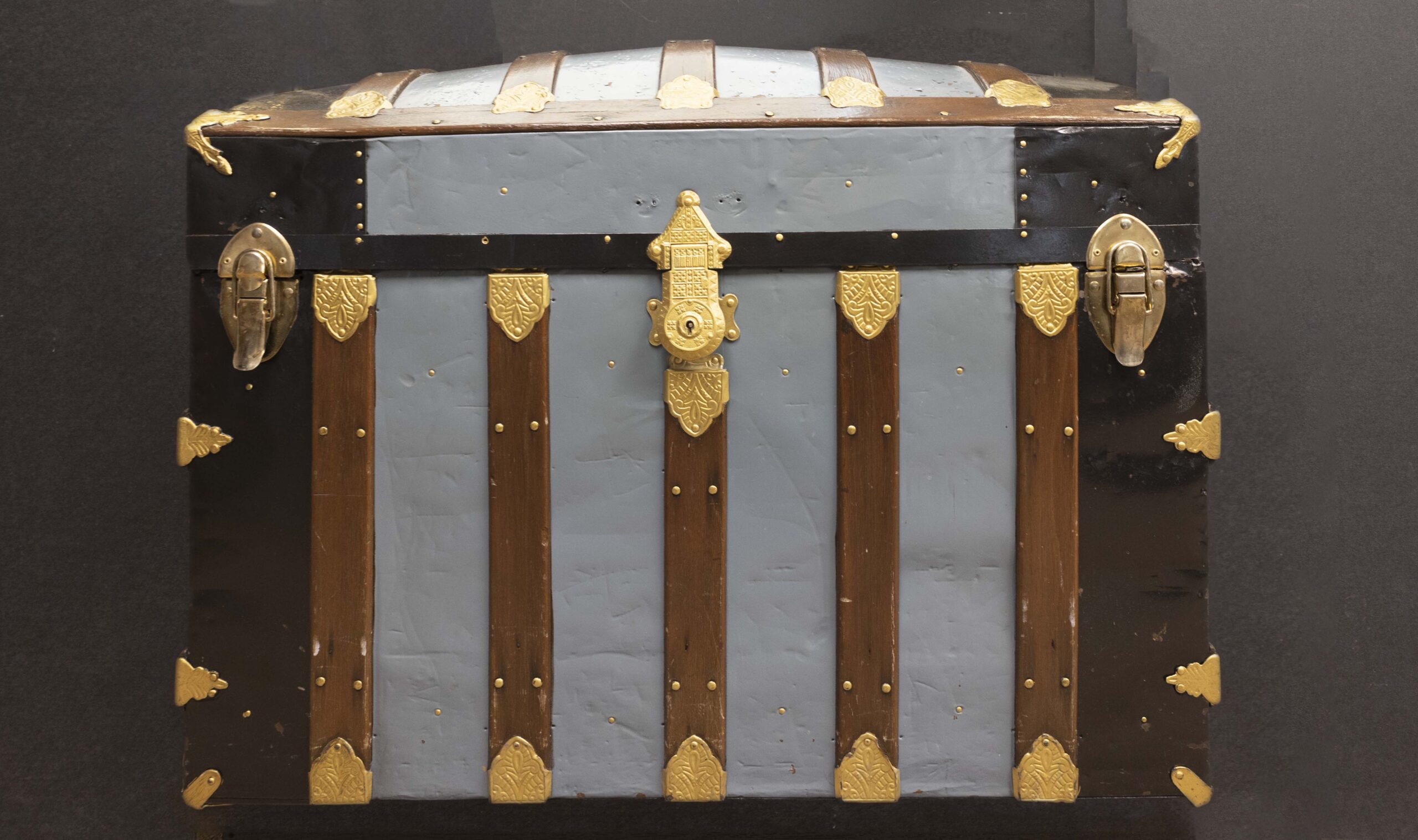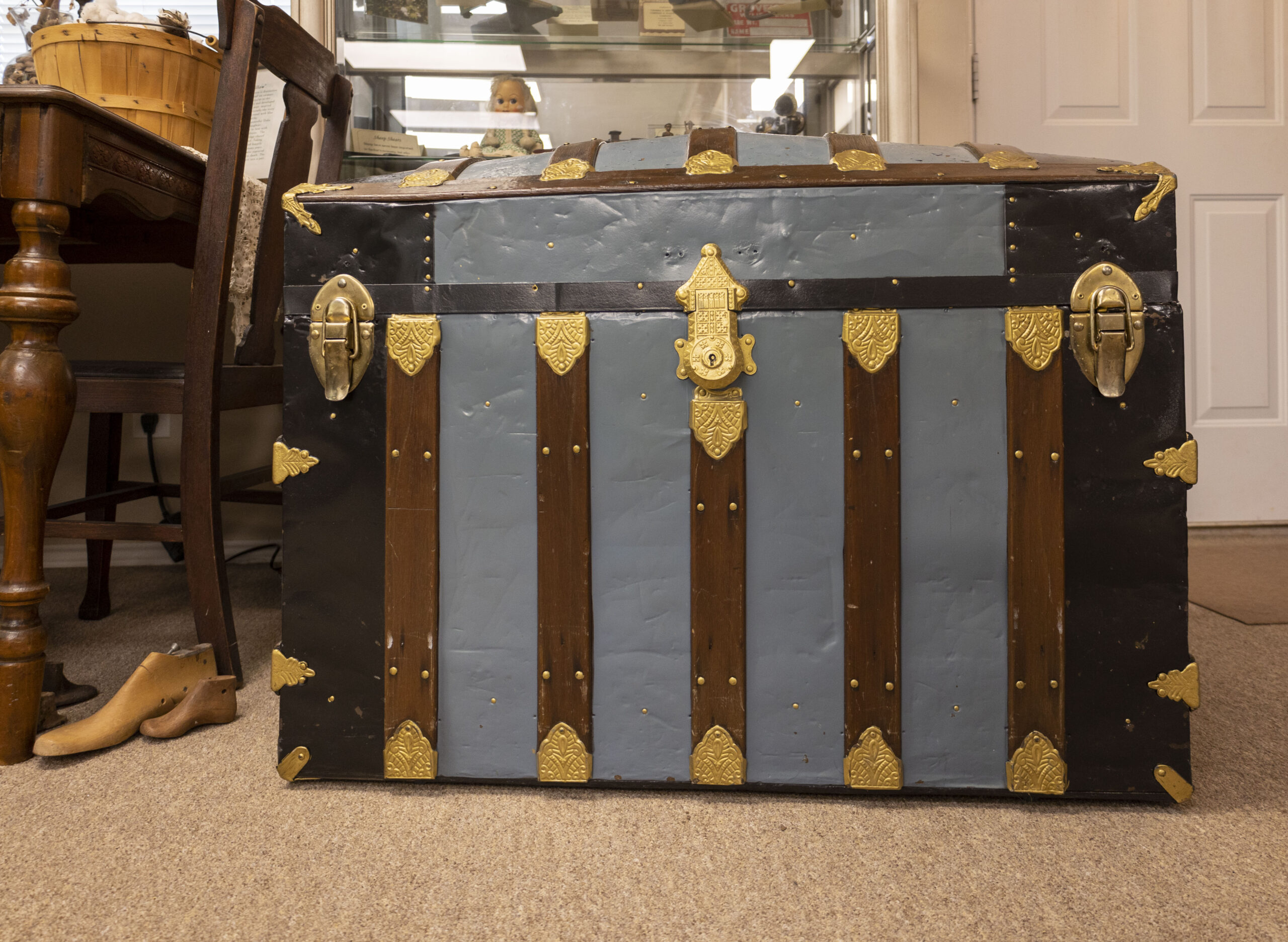
This cross slat trunk was likely manufactured in 1898. It was originally purchased by Albert Roscoe Brand from the Henry Pollack Trunk Company which formerly resided on 722 Elm Street in Dallas, Texas. The company was established just one year prior on March 31st, 1897.
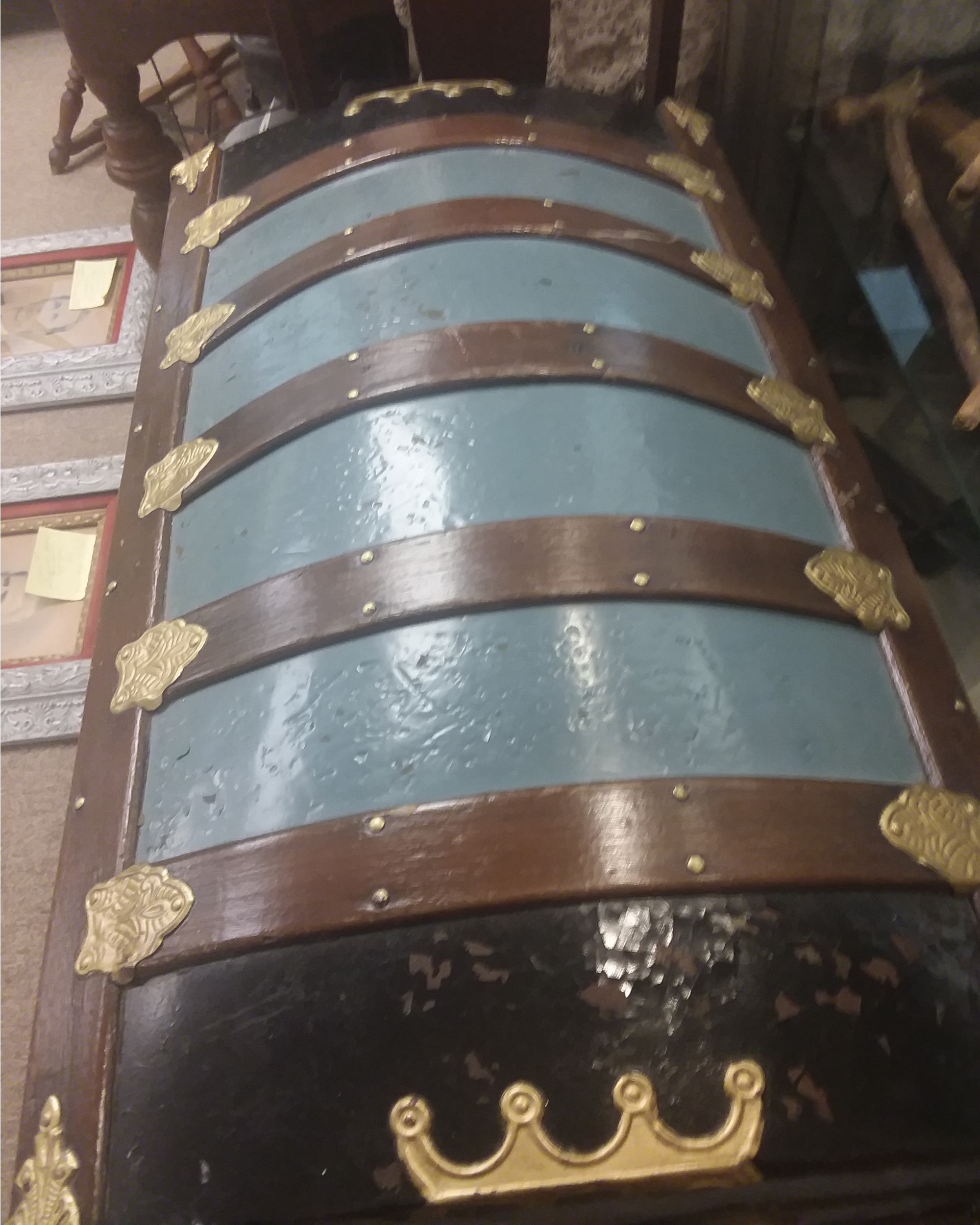
The cross slat design, sometimes referred to as the “new design” became very popular after its creation by C. A. Taylor. The design was patented in 1880, and is characterized by the wooden slats that run front-to-back over the top of the trunk, and either horizontally or vertically across the body. This design remained popular into the early 20th century.
The lock on this particular trunk may be a replacement lock based on the perforations found on the front of the trunk. This lock is an Eastlake pattern likely created in the 1890s. The Eastlake style is a part of the late Victorian period and had significant influence on American furniture and architecture designs.
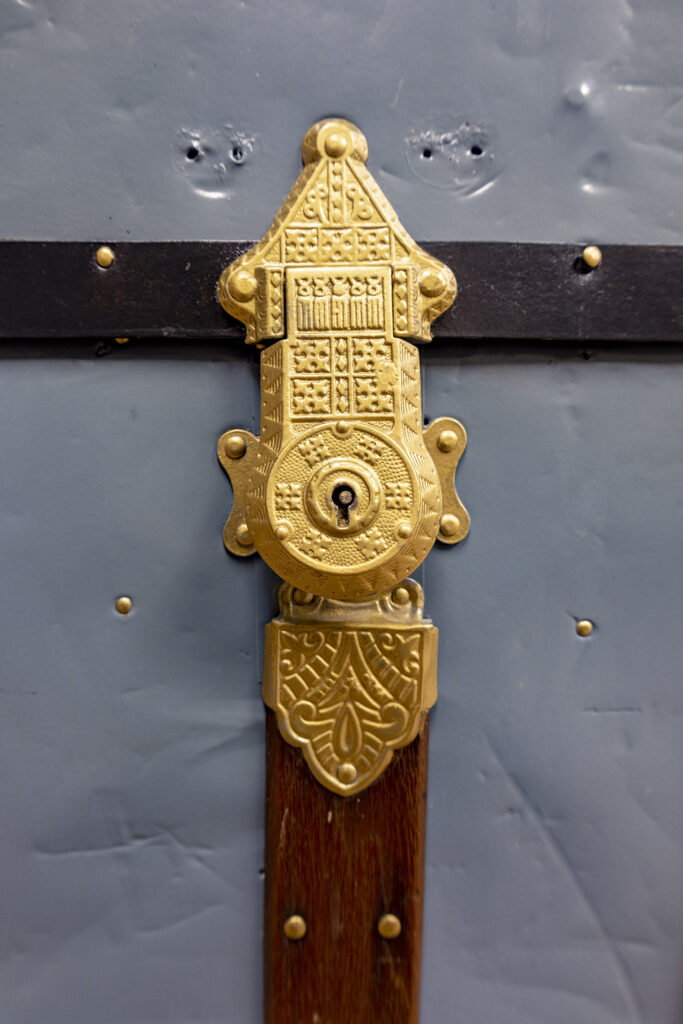
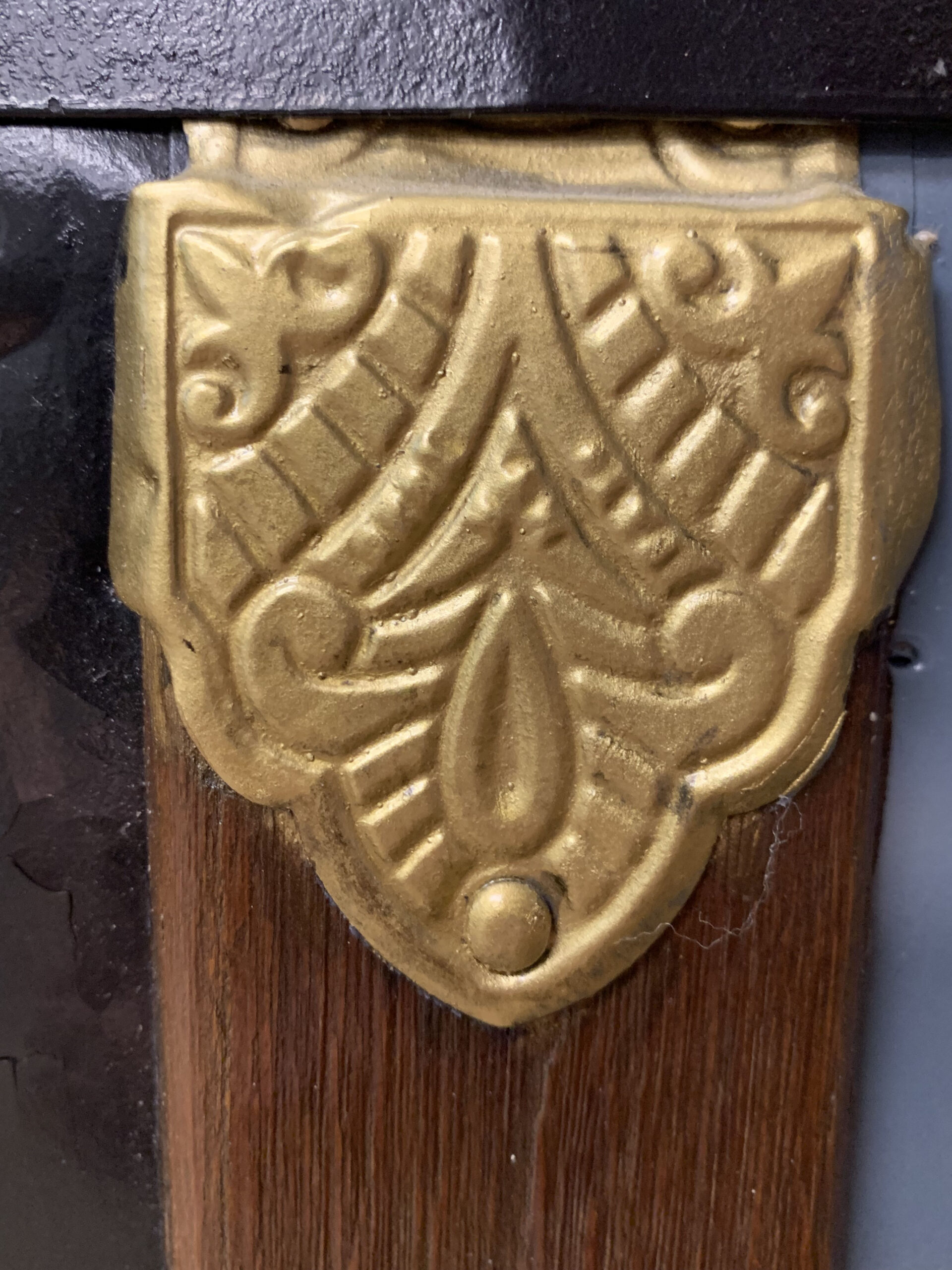
While trunks had practical uses for storing and transporting belongings, many trunks were prized for being works of art. Filigree patterns embossed in metal, domed tops, and varied colors can be found on many high quality trunks.
As such, design styles and patterns can differ widely, even among the same style of trunk. The following is another cross slat trunk, likely also from Dallas, featuring a checkered design.
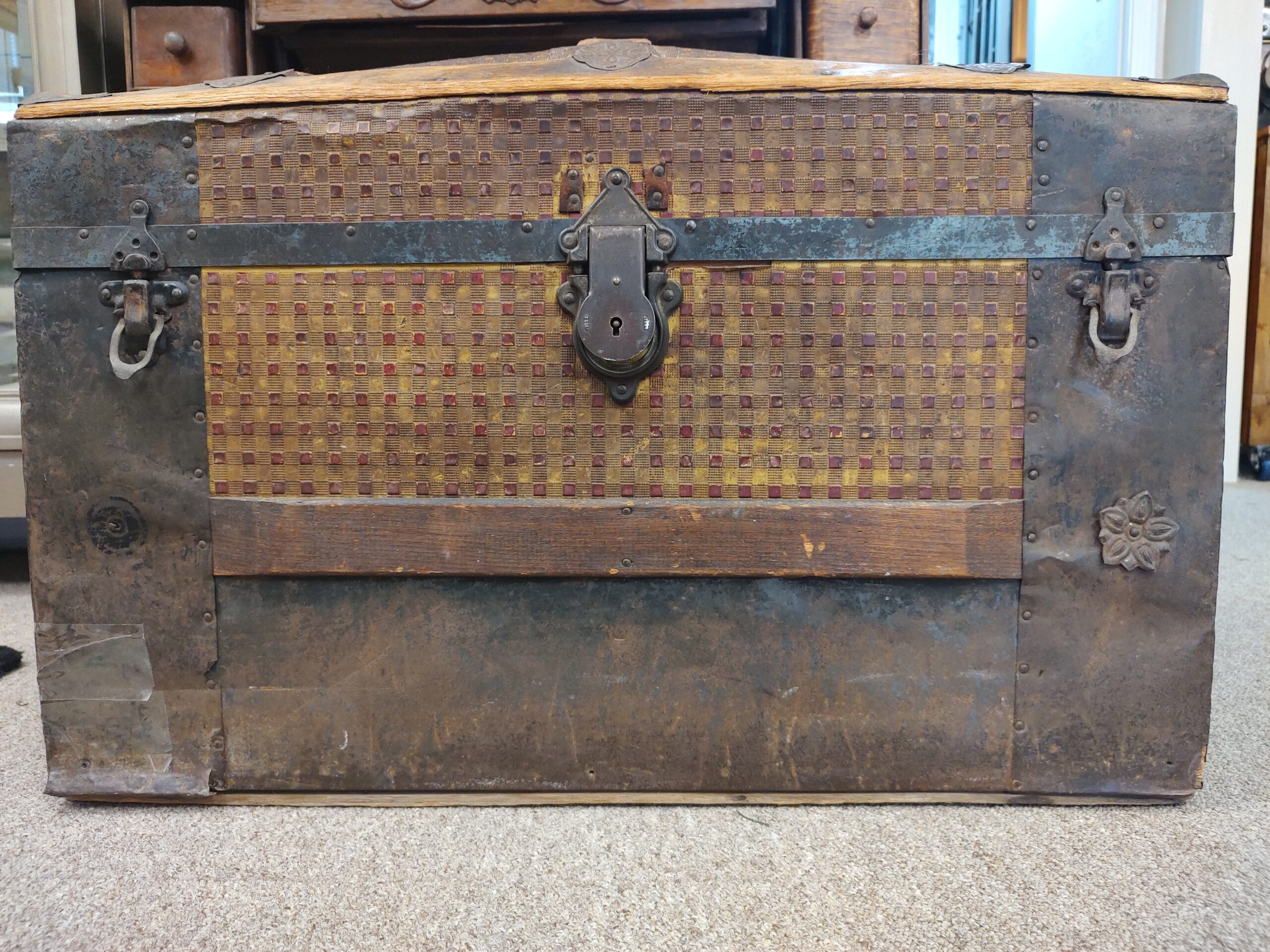
Like the previous trunk, the iron plates guarding the intersection points of the wooden slats have their own filigree pattern. The slats similarly run front-to-back on the top of the trunks, a standard of the cross slat design.
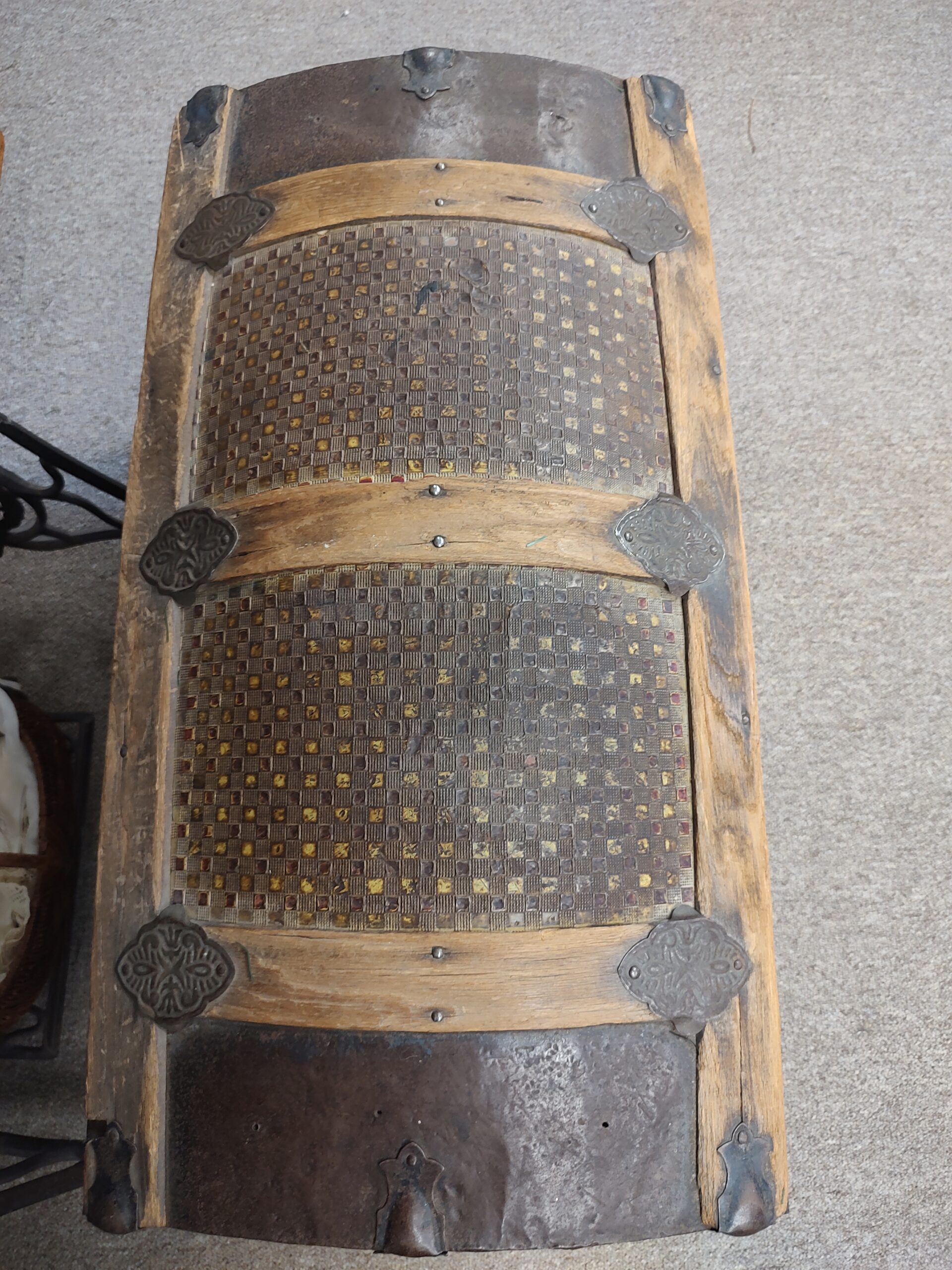
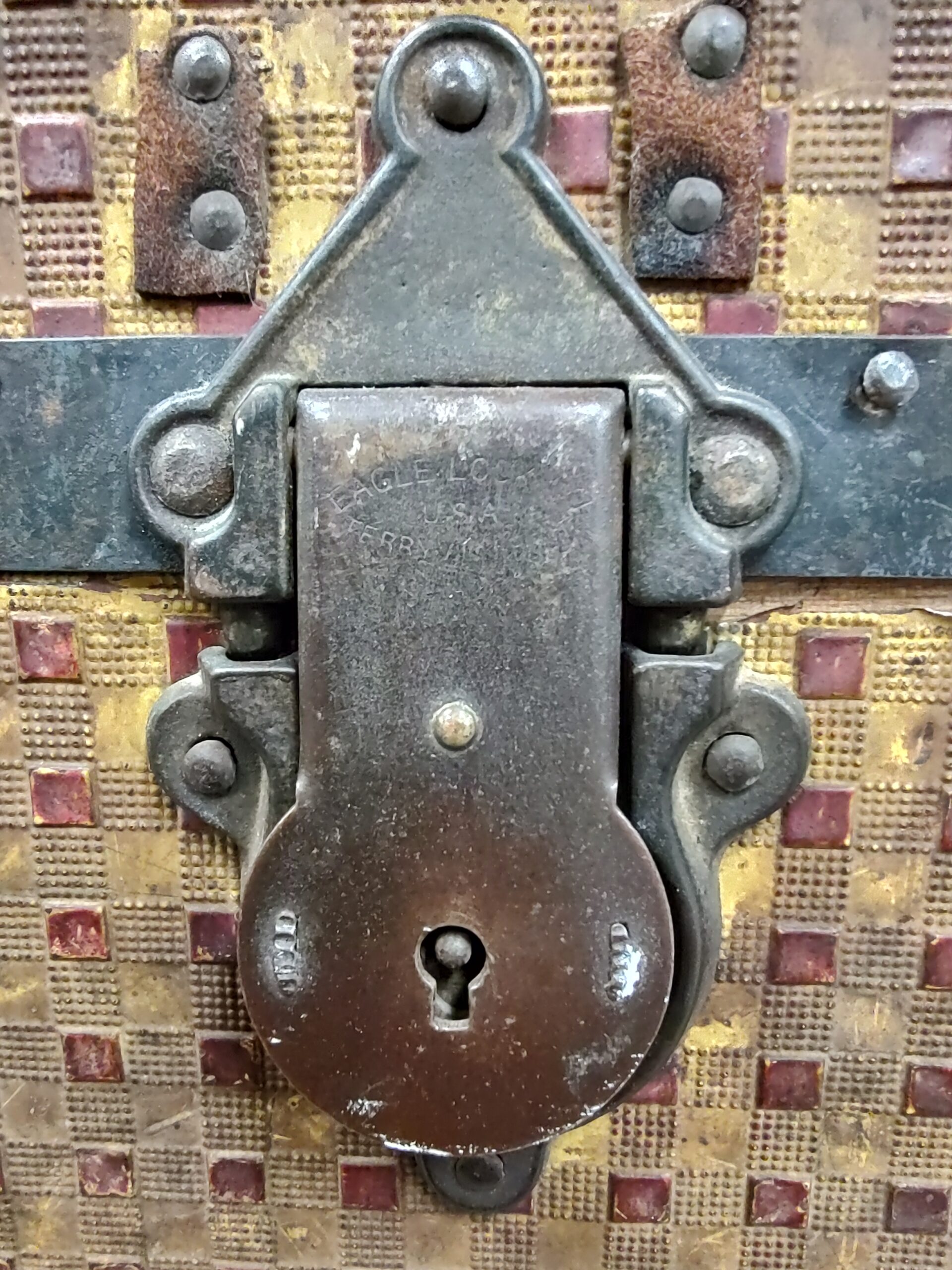
While the internal mechanisms of this lock are similar to the previous one, the appearance is quite different. Many locks are more simple in appearance compared to the Eastlake lock.
Cross slat trunks often feature wooden slats running across the ends of the trunk as well as the top and body. Due to the rounded tops, it was not uncommon for the bellhops responsible for loading trains and steamships to turn trunks on their sides so they would stack more stably with the simpler rectangular trunks. As a result, these slats are in place to offer additional protection. There isn’t a standard for which direction these slats on the body run; on the previous trunk the slats on the body run vertically while on this one, they run horizontally.
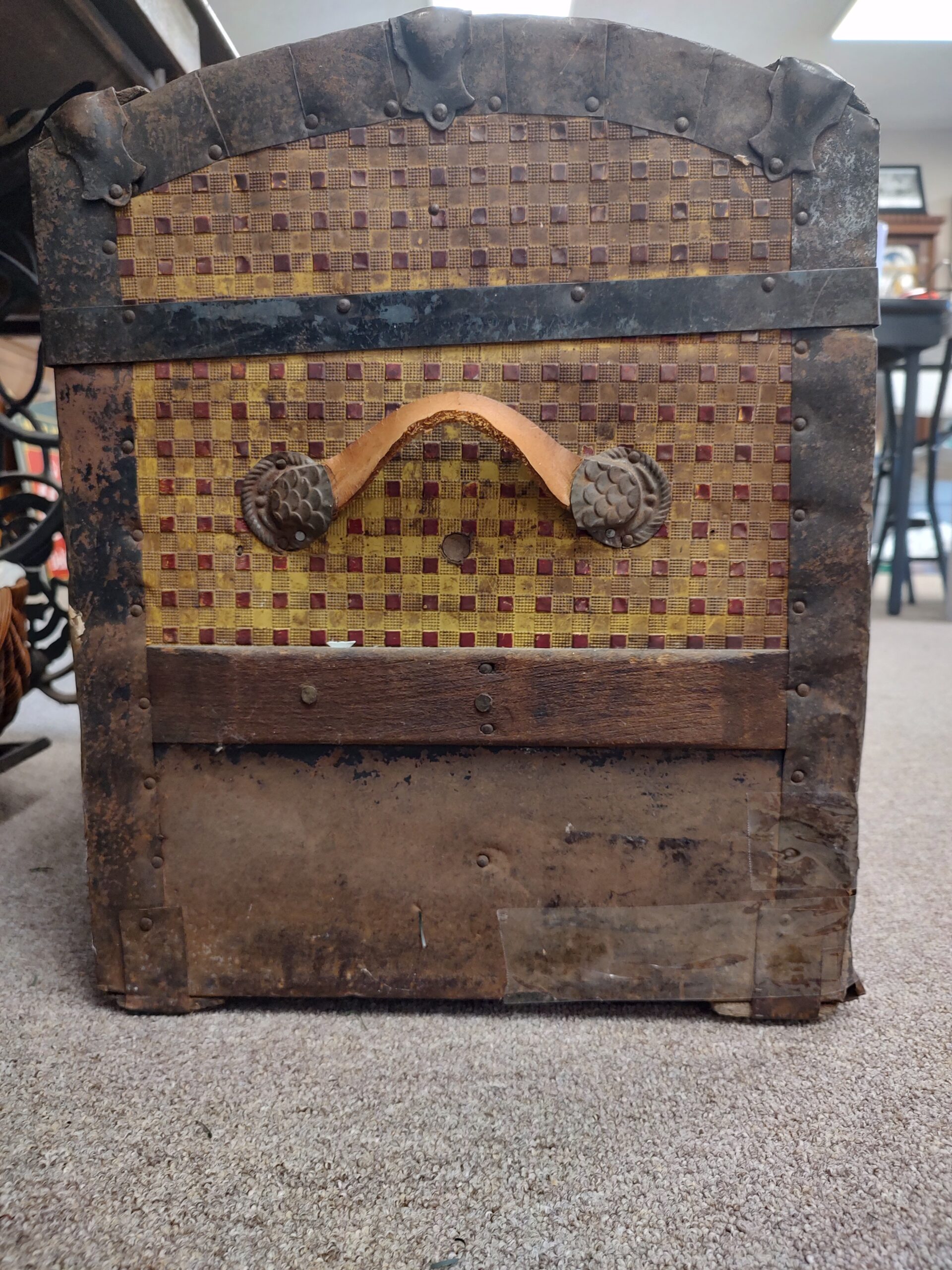
A practical advantage of the rounded top is the increased storage space it provides. Many such trunks have additional shelves or compartments built into the extra space. Removable shelves were also designed to fit into the body to separate the main storage below where one might have their main garments from the tray above where smaller articles such as hats and gloves could be stored and more easily accessed. This shelf in particular has a thumbhole in the right side to make it easier to lift out of the body.
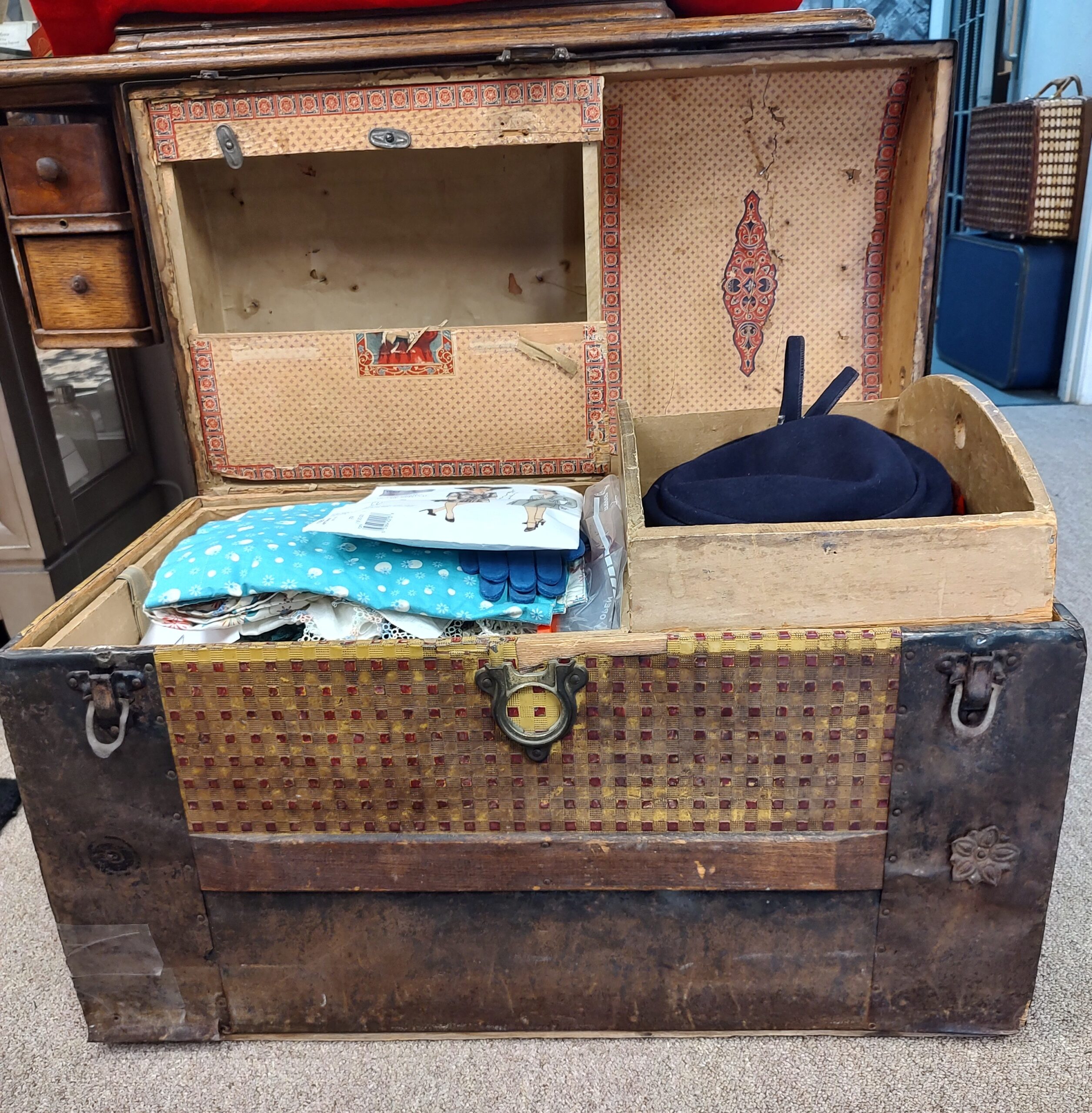
Trunks remained a popular device for storing and transporting personal belongings until the mid 20th century, where synthetic materials and the need for smaller, lighter suitcases came into vogue with the dawn of commercial aviation.
